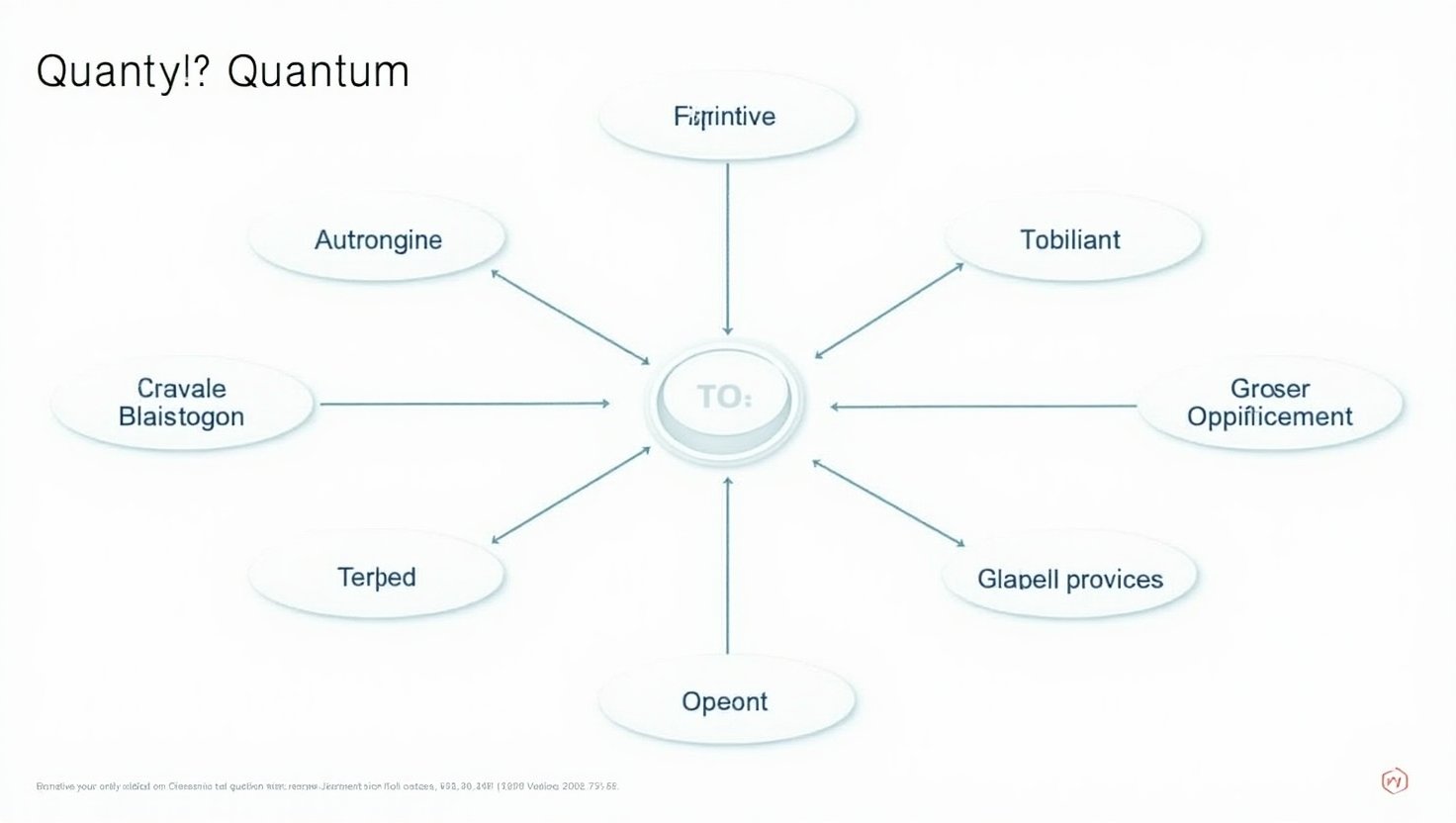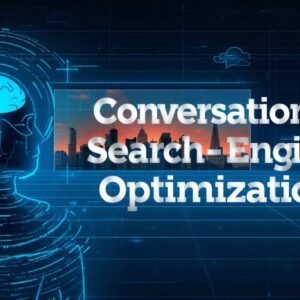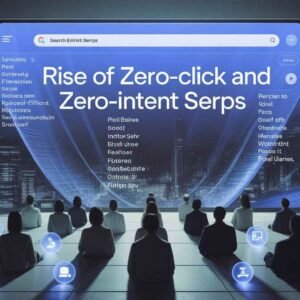Quantum SEO: The Next Frontier
Some avant-garde firms are experimenting with quantum computing principles to enhance SEO efficiency, speed, and precision—a speculative but fascinating future direction.
What is Quantum SEO?
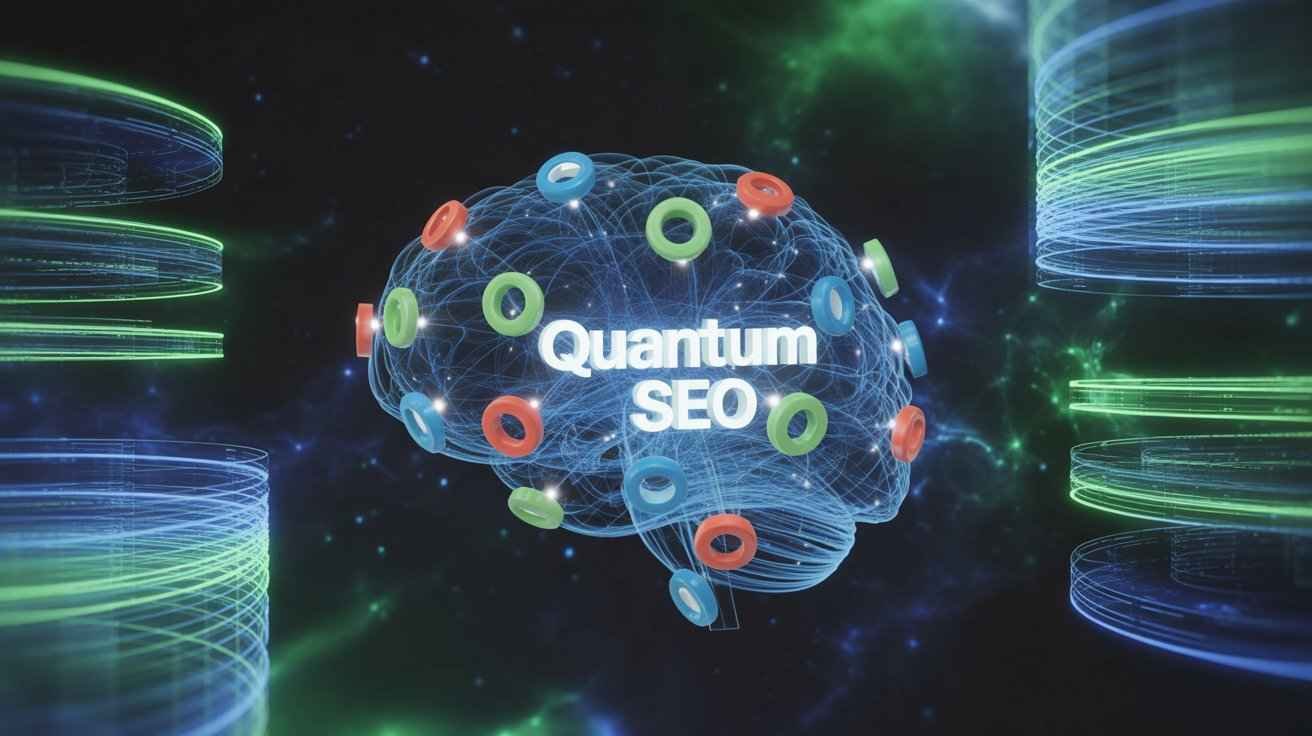
Quantum SEO is an umbrella term for applying (a) bona fide quantum algorithms, (b) quantum-inspired classical algorithms, and (c) hybrid architectures to SEO problems: crawling/indexing optimization, graph ranking, semantic matching, and large-scale anomaly detection. In practice this can mean: using quantum walk variants to compute PageRank-style authority faster or with different stability properties; mapping language data into quantum encodings for QNLP (quantum natural language processing) tasks like intent detection; or adopting quantum-inspired solvers for high-dimensional optimization problems such as crawl prioritization and large-scale content clustering. Academic experiments—many simulated on small graphs or run on near-term hardware emulators—have demonstrated that quantum formulations can converge differently or offer algorithmic advantages for particular problem instances, although those advantages are usually shown under constrained assumptions and small scales so far.
Why it matters now (and what’s still speculative)?
Why it matters now:
- Algorithmic promise on core SEO problems. Quantum PageRank variants and quantum-accelerated linear-algebra routines suggest alternative ways to compute authority, influence diffusion, and similarity at scale—tasks at the heart of ranking and link analysis. Simulation work shows different convergence and robustness properties that could translate to more precise authority signals when scaled. Physical Review LinksResearchGate.
- Narrow practical gains via quantum-inspired methods today. Even before large, fault-tolerant quantum machines arrive, researchers and engineers are extracting value from quantum-inspired classical algorithms that reduce computation for recommendation and optimization tasks relevant to SEO (e.g., clustering, low-rank approximations). These approaches are the nearest-term path to performance improvements for teams that cannot access true quantum hardware. MDPIQuantum
- QNLP promises for intent and semantics. Quantum Natural Language Processing (QNLP) research is maturing: papers and surveys show QNLP can provide new encodings and model classes for semantics and structure that could complement classical NLP in intent classification and disambiguation—areas critical to relevance and SERP satisfaction.
What’s still speculative:
- Hardware scale & stability. Most quantum advantage claims depend on fault-tolerant machines with thousands–millions of qubits or highly problem-specific architectures. Current quantum hardware (NISQ era) is noisy, limited in qubit count, and best for constrained demos rather than full web-scale tasks. Real production gains for mainstream SEO will likely wait until hardware and error-correction mature. Financial Times Barron’s.
- Encoding and IO bottlenecks. Quantum algorithms often assume fast qRAM or efficient encodings of massive classical datasets—assumptions that are nontrivial in the web/SEO context. The cost and latency of moving web-scale data into quantum-friendly forms remain a major practical barrier.
- Economic & integration tradeoffs. Running hybrid quantum systems (or even quantum-inspired pipelines) introduces new engineering complexity, vendor risk, and costs. For many organizations, classical scaled solutions plus improved ML will outperform premature quantum experiments until clear, reproducible benchmarks exist.
Key takeaways for CMOs, SEOs, and engineers-
- CMOs — Strategic posture not panic: Treat Quantum SEO as a strategic horizon: monitor breakthroughs, fund small, measurable pilots (e.g., quantum-inspired clustering for content gaps), and build vendor/partner relationships. Don’t rework core content strategy yet—focus on readiness, talent, and ROI frameworks. Saunders-D-Solutions
- SEOs & marketing leads — Focus on durable signals: Continue optimizing for user intent, content quality, and technical fundamentals. Where it helps, instrument experiments that could surface value from quantum approaches (crawl efficiency tests, large-scale content clustering baselines) so you have clean A/B baselines when hybrid tools become available.
- Engineers & data scientists — Experiment pragmatically: Start with quantum-inspired methods and small QNLP prototypes on representative datasets. Benchmark quantum PageRank simulations and quantum-inspired optimizers against your classical baselines; measure convergence time, robustness, and encoding overhead. Invest in modular architecture so quantum modules (when useful) can be slotted into existing feature pipelines without full rewrites.
2) From Classical to Quantum: How Search Got Here?
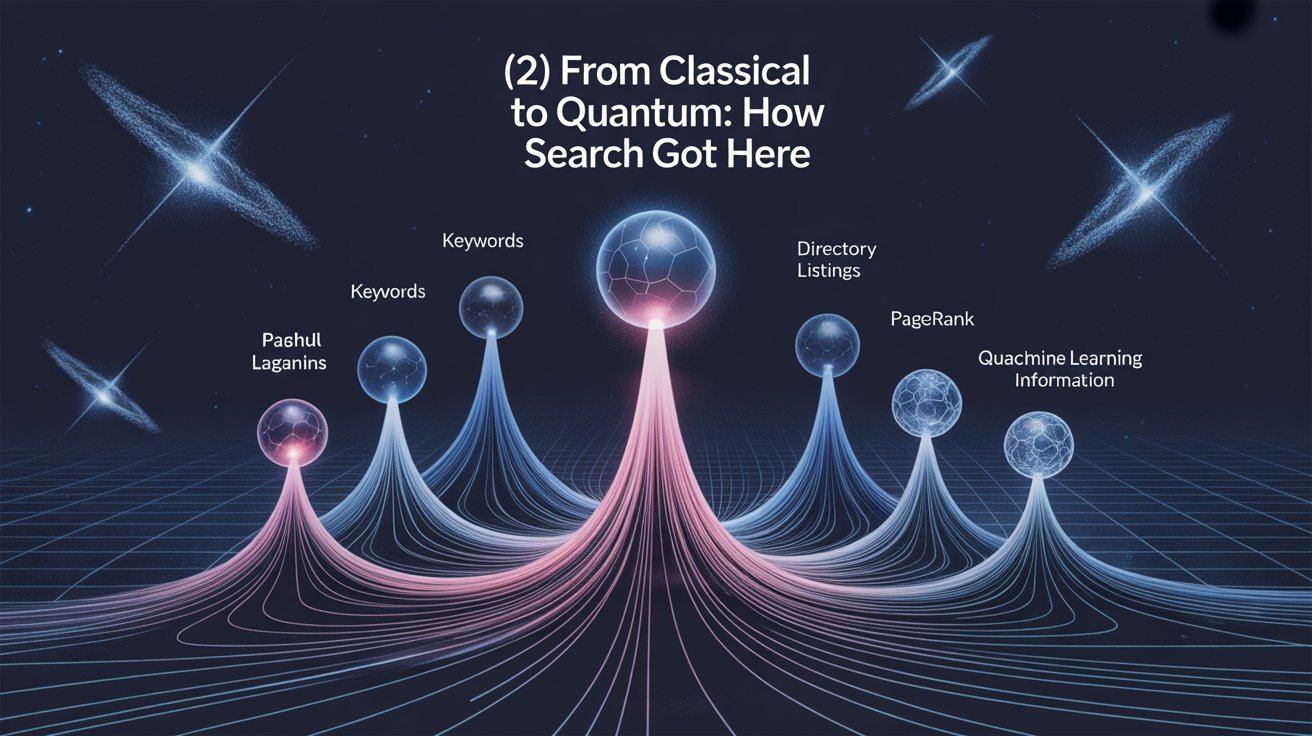
A brief evolution of SEO and search ranking
Search began as simple keyword matching and directory-style listings in the early web, but the modern practice of SEO was born when ranking shifted from raw keyword counts to graph- and signal-driven algorithms. Google’s PageRank—treating the web as a massive link graph—was the watershed that turned relevance into a measurable, link-based signal and made algorithmic ranking central to discoverability. Over the next two decades search evolved into a multi-signal, machine-learning dominated stack where content relevance, user behavior, structured data, and real-time personalization all influence visibility; SEO matured from tactical keyword stuffing into engineering workflows around crawling, indexing, and signals engineering. These historical shifts set the stage for exploring fundamentally different computational models such as those suggested by early quantum-information research.
Limits of classical approaches at web-scale
At planetary scale the “classical” SEO stack—crawl→index→rank—runs into persistent engineering limits. Crawl budgets, index freshness, and server/resource constraints force search engines to make tradeoffs about which pages to fetch and how often, leaving many long-tail pages under-indexed or stale. Large-scale crawling and de-duplication across billions of documents generate massive I/O and graph-traversal costs, while modern ranking systems must evaluate thousands of features per query under strict latency targets. Additionally, adversarial behaviors (spam, scraping, link schemes) and the combinatorial growth of entity graphs make exhaustive, real-time optimization computationally expensive or infeasible with classical brute-force methods. These bottlenecks are why many enterprise SEO problems remain framed as difficult optimization and search problems rather than straightforward data-retrieval tasks.
Where quantum principles could shift the curve
“Quantum SEO” is the shorthand for a family of ideas that apply quantum-computing principles or quantum-inspired algorithms to core information-retrieval tasks. Research into quantum variants of PageRank and quantum walks suggests alternative graph-traversal mechanics that may offer faster convergence or different sensitivity to link structure than classical random-walk methods—properties potentially useful for authority estimation or rapid re-ranking after major graph updates. Separately, Grover-style quantum search and variational/annealing approaches map naturally to large unstructured search and combinatorial optimization problems (think crawl prioritization, canonicalization decisions, or multivariate SERP experiments), offering asymptotic or practical speedups in well-defined scenarios. Finally, the rise of Quantum Natural Language Processing (QNLP) research points to quantum encodings and kernels that could, in hybrid setups, improve intent disambiguation or semantic matching for long-tail queries when classical models hit data/compute walls. Importantly, most benefits today are speculative or “quantum-inspired” (classical algorithms borrowing quantum ideas); still, as hardware and hybrid tooling progress, these principles could become pragmatic levers for reducing latency, improving global optimization, and unlocking new signals for ranking systems—core goals for any future-facing Quantum SEO strategy.
3) Primer: Quantum Concepts for Marketers (Without the Math)-
Qubits, superposition, and entanglement
In the emerging realm of Quantum SEO, qubits serve as the quantum analog to classical bits, capable of representing 0, 1, or any superposition of both—enabling them to process multiple states simultaneously, a foundational leap in computing power Wikipedia. Superposition allows qubits to exist in these multiple states until measured, allowing a single quantum system to consider numerous paths at once—imagine evaluating multiple SEO ranking scenarios in parallel rather than sequentially Live Science.
Meanwhile, entanglement links qubits so that actions on one influence the state of others, even across distance. In the Quantum SEO framework, entanglement suggests the possibility of tightly coupled signals—such as link authority or content relevance—being updated in concert, offering potentially exponential coordination across elements in ranking ecosystems the Times.
Amplitude amplification and interference (why speedups happen)
One of the mechanisms enabling Quantum SEO speedups is amplitude amplification, where quantum algorithms iteratively increase the probability of the correct—or highest-value—result. This process exploits interference between superposed paths to amplify the right outcomes and cancel out the less relevant ones. Though details are mathematical, the practical benefit is that Quantum SEO may identify high-authority pages or optimal content clusters faster and with fewer evaluations than classical methods.
4) Quantum Building Blocks Relevant to SEO-
Grover’s algorithm (unstructured search speedups)
Quantum SEO could leverage Grover’s algorithm, which provides a quadratic speedup for unstructured search tasks—reducing search complexity from O(N) to O(√N) . In SEO contexts, this could mean faster discovery of relevant pages or optimal meta-tag configurations across massive datasets.
Adiabatic/annealing approaches for optimization
Adiabatic quantum techniques reformulate ranking or crawl-budget allocation tasks as optimization problems. A quantum algorithm prepares a quantum PageRank state efficiently—possibly in polylogarithmic time relative to web graph size—offering a Quantum SEO-friendly pathway to expedite ranking computations.
Variational algorithms (VQE, QAOA) for complex tuning
Variational algorithms like VQE (Variational Quantum Eigensolver) and QAOA (Quantum Approximate Optimization Algorithm) pair quantum circuits with classical feedback loops. For Quantum SEO, these can be adapted to tune ranking models or relevance signals—seeking optimal configurations over high-dimensional search spaces that might otherwise take classical systems far longer to explore.
6) Quantum Natural Language Processing (QNLP) for Search Intent-
Why language is hard (context, ambiguity, long-tail queries)
Human language is inherently nuanced and ambiguous—context and long-tail variations make it a formidable challenge for conventional search and ranking models. Quantum SEO envisions using QNLP to tackle this complexity by leveraging quantum properties like superposition and entanglement to better encode and interpret subtle language patterns and relationships. In a QNLP framework, meaning isn’t just linear or token-based; rather, it can reflect overlapping or intertwined senses and contexts in ways classical methods can’t easily capture. This capability could offer Quantum SEO a way to understand intent and disambiguate nuanced queries more naturally.
Quantum encodings of language structures
QNLP approaches often rely on frameworks like DisCoCat, which use categorical quantum mechanics—mapping grammatical structure into quantum circuits, where meanings of words and compositional syntax become quantum states and processes MDPI. Words and phrases embed into quantum states via parameterized circuits; grammar becomes circuit structure. This allows Quantum SEO algorithms to encode linguistic structures in fundamentally richer ways—enabling semantic calculations using the geometry of quantum state space.
Potential use-cases: intent detection, entity disambiguation, semantic clustering
QNLP’s ability to model meaning and context at a quantum level opens several powerful use-cases for Quantum SEO:
- Intent detection: Quantum-encoded sentence meaning enables more accurate capture of subtle user intent, particularly for nuanced or conversational queries.
- Entity disambiguation: Overlapping quantum representations help differentiate between homonyms or closely related concepts based on context.
- Semantic clustering: Coherent quantum similarity measures and quantum kernel methods allow grouping of related query or content clusters more precisely than classical embeddings .These can help organize content strategy and target clusters of latent search intent with high precision.
Hybrid QNLP + classical LLM workflows
Given current limitations of quantum hardware (NISQ era), Quantum SEO architects are likely to adopt hybrid pipelines: classical LLMs handle broad language modeling and generation, while QNLP modules focus on intent detection, disambiguation, or semantic clustering. Classical pre- and post-processing encodes data into quantum circuits and decodes outputs. This hybrid approach leverages strengths of both realms: LLM adaptability and QNLP’s richer compositional semantics and potential quantum speedups SpringerLink.
7) Quantum for Crawl, Index, and Content Strategy:
Crawl-budget optimization as a quantum optimization problem
In traditional SEO, crawl budgets must be allocated judiciously. Quantum SEO explores treating crawling as a combinatorial optimization—finding the best pages to crawl for maximum freshness and impact. Quantum-inspired optimizers or quantum annealing could evaluate vast crawling strategies more efficiently, enabling dynamic and high-impact crawl-priority decisions.
Canonicalization and duplication detection on massive graphs
Web graphs are massive and contain many near-duplicate or canonical content clusters. Quantum SEO could apply quantum graph-based clustering methods, perhaps using quantum walks or graph-based similarity encodings, to detect duplication or canonical relationships at scale more precisely than hashing or classical clustering alone.
Content clustering at scale: topic maps and knowledge graphs
Large-scale semantic clustering for content strategy can benefit from quantum kernel methods or quantum-accelerated k-medians (e.g. Grover-based speed-ups) . Quantum SEO could help build topic maps and knowledge graphs with better semantic fidelity and efficiency—grouping related pages/topics for internal linking, content hubs, and topic cluster creation.
8) Quantum-Enhanced Ranking Signals and Relevance:
Link graph analysis and authority diffusion
Classical PageRank relies on random walk models. Quantum SEO explorations suggest quantum walks or quantum PageRank variants could model authority diffusion more sensitively and converge faster .This quantum approach may yield ranking signals that reflect link authority with higher precision and responsiveness.
Learning-to-rank with variational optimizers
Quantum machine learning frameworks—particularly variational quantum circuits—can offer new paradigms for learning-to-rank tasks. Quantum SEO using variational optimizers might train ranking models that converge faster or generalize better due to quantum parameter space, especially for complex feature interaction patterns.
Query–document matching via quantum kernels
Quantum kernel methods—leveraging high-dimensional quantum feature spaces—could enable more expressive similarity assessments between queries and documents. Quantum SEO could use these kernels for improved matching of long-tail queries or nuanced intent, surpassing classical vector similarity limits.
9) Spam, Anomaly, and Risk Detection:
Pattern discovery in noisy, adversarial environments
Detecting manipulative patterns—like link schemes or content spamming—is challenging. Quantum SEO could apply quantum anomaly detection methods, where quantum probability distributions and similarity metrics reveal non-obvious patterns in noisy data.
Quantum-inspired anomaly detection for traffic and backlink audits
Quantum approaches to anomaly detection (e.g., using quantum clustering or distance measures in feature space) can spot unusual backlink or traffic patterns faster and with greater sensitivity—empowering Quantum SEO to proactively flag potential risks or spam behaviors.
Faster exploration of adversarial patterns (e.g., link schemes)
Quantum-accelerated searches (like Grover’s algorithm style quadratic speed-ups) enable faster sweeps of large backlink datasets for adversarial patterns. Quantum SEO may thus detect coordinated link manipulations or adversarial SEO schemes more efficiently than classical scanning.
11) Roadmap: Adopting Quantum (Responsibly) in SEO:
Below is a focused, research-backed roadmap that shows how an SEO or tech team can responsibly experiment with and (eventually) adopt quantum technologies for real-world SEO problems. Wherever helpful I refer to “Quantum SEO” to show how these steps map back to search, ranking, crawl and content workflows.
Phase 1 — Quantum-inspired pilots on classical hardware
Goal: get practical gains today by using quantum-inspired methods and optimization techniques that run on classical servers.
- What to pilot: combinatorial optimizations (crawl scheduling, canonicalization clusters, crawl-budget allocation), annealing-style solvers for large-scale content clustering, and “quantum-inspired” kernels for feature selection in ranking models. These methods mimic quantum approaches but run on conventional hardware, so you get speed/quality upside without qubit constraints.
- How to measure success: set baseline KPIs (crawl efficiency, index coverage, time-to-cluster, ranking-model convergence) and measure improvement per compute-dollar and per hour. Use A/B test cells on noncritical index slices (e.g., non-brand long-tail queries) to avoid risk to core traffic.
- Data & tooling needs: well-structured graph exports (link graph + signals), feature stores, and an experimentation sandbox. Use existing ML stacks (scikit/LightGBM/TensorFlow/PyTorch) with plugins for annealing or variational-style optimizers.
- Governance: short, time-boxed experiments (6–12 weeks), with an explicit rollback plan. Keep model explainability in the loop so SEO teams can interpret why a quantum-inspired change altered crawl/prioritization decisions.
Phase 2 — Hybrid prototypes with cloud quantum services
Goal: run true hybrid quantum–classical workflows where quantum hardware (or high-fidelity simulators) tackle the specific subproblems that benefit most from them.
- What “hybrid” looks like for Quantum SEO: the pipeline keeps data ingestion, feature extraction and serving on classical infrastructure, while offloading specific optimization or search-subtasks to cloud quantum backends (for example, combinatorial recrawl scheduling or prototype quantum PageRank experiments). That handoff is typically orchestrated as a hybrid job where classical pre/post-processing wraps a quantum task.
- Where to run: major cloud providers already offer quantum services and managed hybrid orchestration (examples include hosted SDKs and hybrid job APIs). Start with provider sandboxes and simulators before reserving QPU time.
- Prototype design: (1) identify the smallest high-impact subproblem (e.g., reducing duplicate-crawl overhead across 1M URLs); (2) build a classical baseline; (3) implement the hybrid job that submits encoded problem instances to a quantum device or annealer; (4) validate results, latency, and stability against baseline.
- Practical constraints to watch: queue times, per-task latency, limited problem size (qRAM and data-loading bottlenecks), and noise/error variability in results — all of which affect whether a quantum answer is production-usable. Expect to repeat runs and use error-mitigation or result-averaging to obtain stable outputs.
Phase 3 — Targeted productionization for specific bottlenecks
Goal: deploy hybrid/quantum solutions only where they demonstrably outperform classical alternatives on meaningful KPIs and cost metrics.
- Selection criteria: productionize when a quantum or quantum-inspired solution shows measurable improvement on SEO business metrics (e.g., meaningful uplift in index freshness, substantial CPU/time savings on crawl ops, or materially better ranking-model convergence) and when total cost (cloud QPU + classical orchestration) is justified. Benchmark improvements against both classical baselines and quantum-inspired approaches.
- Safety and observability: add strict monitoring (input distributions, output drift, error rates) and automatic fallbacks to classical pipelines if quantum outputs deviate or if QPU availability drops. Maintain clear logs of when and why quantum-derived signals influence ranking or crawl decisions to satisfy internal audit and search-quality teams.
- Gradual rollout pattern: start with read-only or advisory modes (quantum outputs suggested but not enforced), then move to safe write paths (e.g., using quantum output to raise recrawl priority but not to alter canonical tags), and finally to closed-loop production actions only once stability and ROI are proven.
12.Enterprise e-commerce: faster product clustering and re-ranking
Large e-commerce catalogs depend on fast, accurate clustering and re-ranking for faceted search, recommendations, and merchandising. In a plausible Quantum SEO workflow, quantum-inspired optimization and hybrid quantum-classical routines would accelerate high-dimensional similarity searches (product embeddings, behavioral features) so clusters can be recomputed far more frequently than today — enabling near real-time category reshuffles and dynamic re-ranking tied to trending demand. This means seasonal or flash-sale product clusters would surface almost instantly, improving relevance signals (CTR, conversion) that feed back into ranking loops used by Quantum SEO strategies. Such approaches build on active research showing quantum and quantum-inspired methods can offer provable speedups or improved solution quality for recommendation and optimization problems.
Operationally, an enterprise might run classical embedding generation (text, images, behavior), then use a quantum or annealer module to solve the hardest combinatorial subproblems — e.g., best-k nearest neighbor across millions of SKUs or an optimal re-rank that satisfies business constraints (stock, margin, shipping). The result is an actionable pipeline where Quantum SEO teams A/B test quantum-assisted rankers against classical baselines to measure incremental uplifts in user metrics and revenue.
News and publishers: freshness optimization under volatility
Publishers live and die by freshness and speed-to-index. Quantum SEO could reframe freshness as an optimization problem across a graph of articles, sources, and user engagement signals: which pages to crawl, reprocess, and promote now vs. later to maximize timely relevance under a constrained crawl budget. Quantum or quantum-inspired optimizers (including annealing and hybrid solvers) are well-suited to these scheduling and prioritization tasks where the search space is enormous and brittle to small delays. By enabling faster, higher-quality frontier searches of URL-priority configurations, publishers could keep critical stories prioritized in indexes and SERPs as events unfold.
Practically, a newsroom might feed real-time engagement, source credibility, and topical diffusion graphs into a hybrid scheduler that outputs prioritized crawl/reindex actions. Over short time windows this produces measurable improvements in “first-to-index” performance and in the freshness signals that Quantum SEO practitioners optimize for when trying to capture search intent around breaking events.
Local SEO: entity resolution and proximity relevance
Local SEO hinges on accurate entity resolution (business names, addresses, reviews) and precise proximity signals. Quantum-enhanced graph algorithms and quantum-inspired clustering could parse noisy, distributed local data faster and more robustly—resolving duplicates, consolidating citations, and disambiguating entities across heterogeneous sources (maps, directories, social posts). When entity graphs are large and highly connected, quantum approaches to graph partitioning and community detection can find higher-quality solutions faster, improving the canonical data that underpins local ranking features. Quantum SEO teams could then use those cleaned, canonical entities to improve NAP consistency, knowledge panel signals, and proximity-sensitive ranking permutations.
On the proximity front, hybrid optimizers could solve placement and distance weighting problems that account for travel times, geo-barriers, and session context at a granularity previously impractical — enabling granular personalization like “best open lunch spot within X minutes by walking speed and public transit.” This tighter geo-signal management becomes a direct lever in Quantum SEO playbooks for local businesses. arXivThe Economic Times
B2B SaaS: long-tail intent mapping with QNLP hybrids
B2B SaaS discovery is driven by nuanced, long-tail queries and complex, multi-stage buyer intent. Quantum Natural Language Processing (QNLP) offers models and encodings that can represent syntactic and semantic structure differently from classical embeddings; when combined with classical large-scale language models in a hybrid pipeline, QNLP modules could excel at fine-grained intent disambiguation, paraphrase clustering, and entity linking across internal docs, support forums, and external content. For B2B SaaS, this means better mapping of obscure, multi-clause queries to product features, solution pages, and content assets — a clear win for conversion-focused Quantum SEO.
A concrete implementation would be a two-stage system: classical transformers generate broad semantic embeddings and candidate matches; a QNLP-informed scorer then refines ranking around the long tail where small semantic distinctions matter most (feature nuance, regulatory phrasing, integration constraints). The hybrid setup preserves production scale while letting Quantum SEO experiments target the highest-value intent slices where uplift potential is largest.
Conclusion: A Realistic Vision for Quantum SEO:
What’s actionable today via quantum-inspired methods
While large-scale, fault-tolerant quantum computers that can run full end-to-end search pipelines remain a future milestone, there are concrete, practical steps teams can take now under the banner of Quantum SEO. Start with quantum-inspired optimization and hybrid workflows: use quantum-inspired heuristics (e.g., annealing-like solvers, variational optimization, tensor-network methods) to improve crawl-budget allocation, site clustering, and large-graph authority analysis on classical hardware. These approaches frequently deliver better exploration of complex solution spaces without requiring real quantum hardware, and they’ve been shown to help optimization and recommendation problems in practice. Deployable prototypes include variational optimization for learning-to-rank hyperparameter tuning, quantum-inspired graph solvers for internal link optimization, and hybrid QNLP (quantum natural language processing) experiments—where quantum encodings are emulated classically to test semantic clustering or intent signals before moving to hardware-assisted runs.
What to watch as hardware/software matures
Track three converging vectors: hardware scale and error rates (qubit counts, coherence, and error mitigation), algorithmic progress (quantum PageRank variants, variational circuits for graph and ranking problems, and QNLP models), and cloud access/SDK maturity (exposed APIs and qRAM/data-loading mechanisms). Progress on quantum PageRank and variational ranking methods suggests genuine algorithmic models that could map onto search-centric problems (graph traversal, authority diffusion, fast similarity searches) once data-loading bottlenecks and noise are handled. Meanwhile, QNLP research is beginning to sketch how language-centric tasks relevant to search (intent disambiguation, semantic embeddings, sparse long-tail query understanding) could benefit from quantum representations—first in hybrid experiments and later on stable quantum processors. Keep an eye on vendor roadmaps, published quantum PageRank/variational papers, and QNLP benchmarks as early indicators of practical impact.
The strategic edge of early experimentation
Early, well-scoped experiments in Quantum SEO offer strategic advantages without betting the whole stack on nascent hardware. Benefits include accelerated insight discovery (faster exploration of complex linking or topical structures), differentiated data features for ranking models (quantum-inspired kernels or graph embeddings), and a stronger innovation narrative that attracts talent and partnerships. Pragmatically, running pilots—first as quantum-inspired algorithms on classical infrastructure, then as hybrid runs on cloud quantum backends—lets teams build reproducible baselines, measure KPI deltas (crawl efficiency, index freshness, ranking convergence), and create a governance path for safe production rollouts. Market moves already show avant-garde firms experimenting publicly with “quantum SEO” approaches; that experimental lead can translate into measurable competitive advantage if paired with careful measurement, conservative production gates, and a roadmap that migrates only the components that prove value.
For more post don’t forget to visit http://onlinedigigyan.com
